(Written by Geneva – gid617)
A couple of weeks ago, we discussed the #21323 LEGO Ideas Grand Piano (see: LEGO Ideas Grand Piano Review & Modifications) and I promised to visit the functions in a second article. After we take a look at all the moving parts and the app functionality, I’ll share some final thoughts on the set from my perspective as an amateur pianist.

To start with, the piano opens and closes very smoothly. There are no hitches in lid and the fall board comes down as nicely as the best piano covers I’ve seen. (If not opened fully, it can fall by itself.)
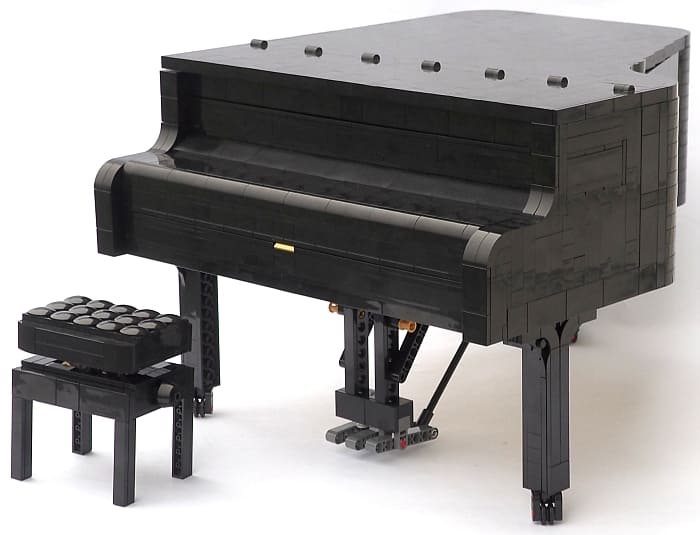
The piano also spins freely on the three wheels, though after I spun it for about half a minute one of the legs started to come apart.
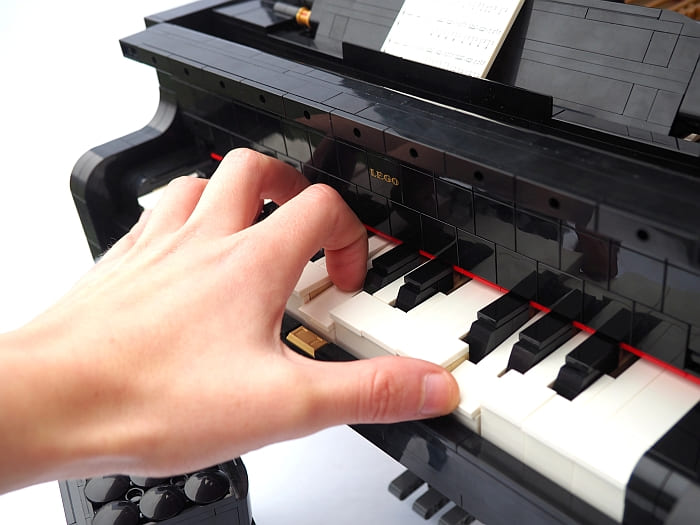
If you’ve ever built a LEGO creation with movement, you know that opening and closing lids aren’t really that hard. The impressive part of this set comes in at the keys. With two full octaves of independent keys—black and white both moving—the functionality is through the roof.
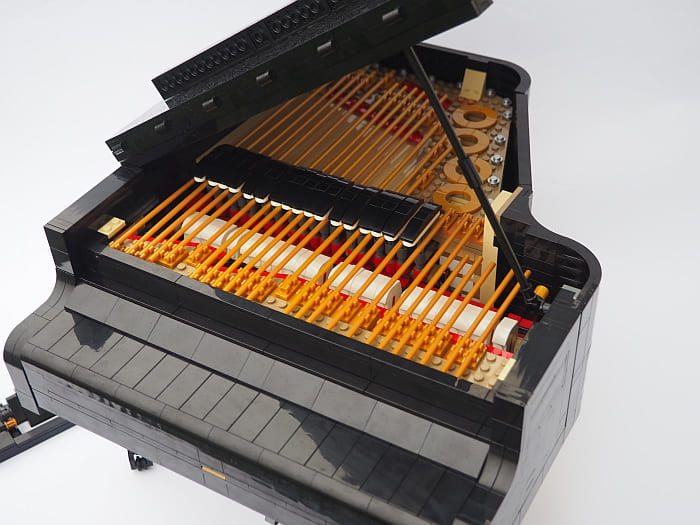
Not only do the keys work, but they raise the hammers, just like the keys in a real piano. And not only do the keys raise the hammers, but they also raise the dampers and strike the gold flex tube “strings”.

I don’t think I can say enough about how impressive this function is to me. It’s an incredible amount of moving parts and it works every time. The only very minor hitch is that the keys don’t always align perfectly after being struck.
Above and beyond the keys, the right pedal also raises the dampers. In a real piano, this allows the strings to vibrate even after you’ve let go of a key, creating a sustained sound that makes a piece of music sound smoother.
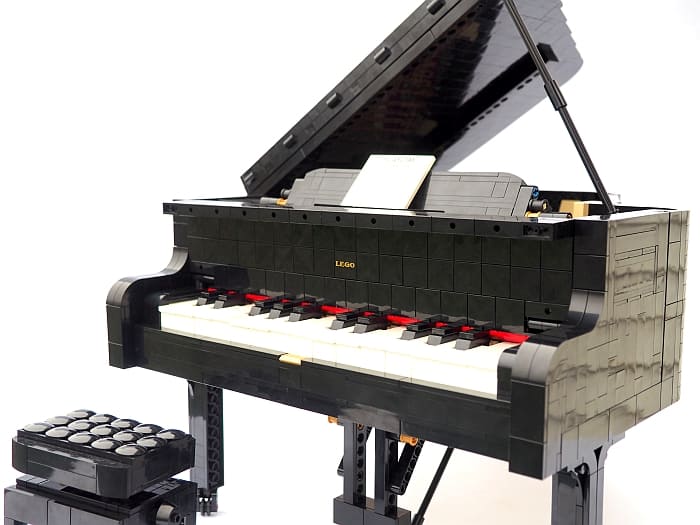
Now let’s move on to take a look at the LEGO Powered Up functionality. This set includes a battery box, a motor, and a movement sensor. The three components pair with the LEGO Powered Up app to allow you to “play” the piano.

Connecting the battery box to the app was easy—just press the green button and wait for it to load. Once it’s done, you’ll get a steady blue light. The app itself is also intuitive and easy to use—at least so says the millennial.
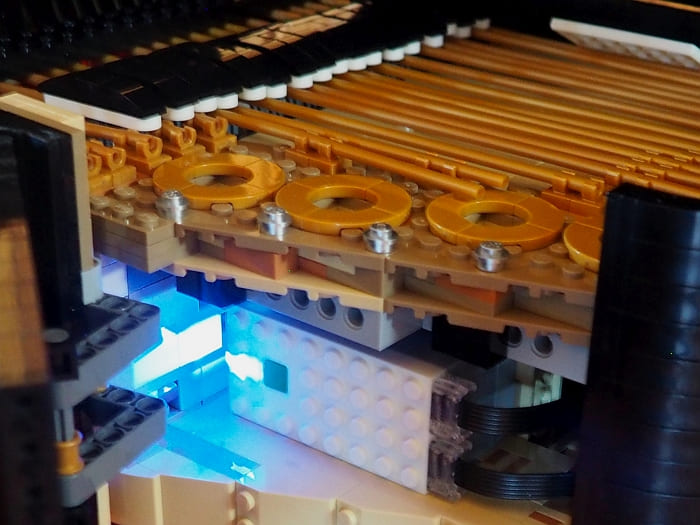
The piano has two functions: you can play it yourself, or let it self-play. Playing it yourself isn’t terribly exciting. The sensor doesn’t always catch it when you strike the key the first time, the notes on the app don’t always correspond (for instance, you’re only expected to strike a single key once even though the music sheet has two sixteenth notes written), and the app will play the piece you selected without paying any attention to what notes you’re actually striking on the keyboard.
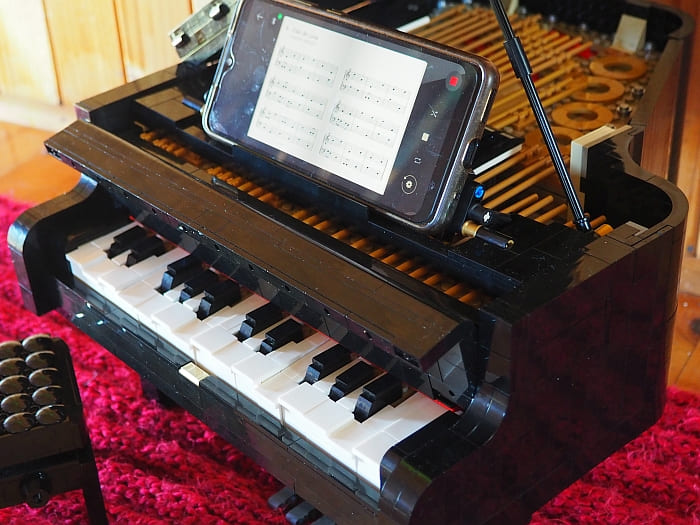
The self-playing function is more interesting. I could see this working well as a living room display—connect your phone every now and then and enjoy some music while the keys move in beautiful rhythm. (They rotate through the same three positions, regardless of which song you’re playing.)
The first time I tried the self-playing function, the keys stopped moving after about five seconds. So I took the soundboard off of the piano to access the gears, which was not as easy as it sounds. I really have no idea what I did that fixed it—I just wiggled the gears some—but it started working smoothly after that.
The app doesn’t have a whole lot of music to choose from, but you could play whatever you like on another device and just leave your phone volume down. So while the “play it yourself” function is not real enough to be very interesting, the self-playing function really does elevate the set and make it extra interactive. Pictures aren’t enough to really show functions, so here’s a video of the piano in action.
This is not shown in the video, but later I also added a custom light-kit from a company called Lightailing. I have included a picture below, and you can read my full review here: LEGO Grand Piano + Light-Kit Review
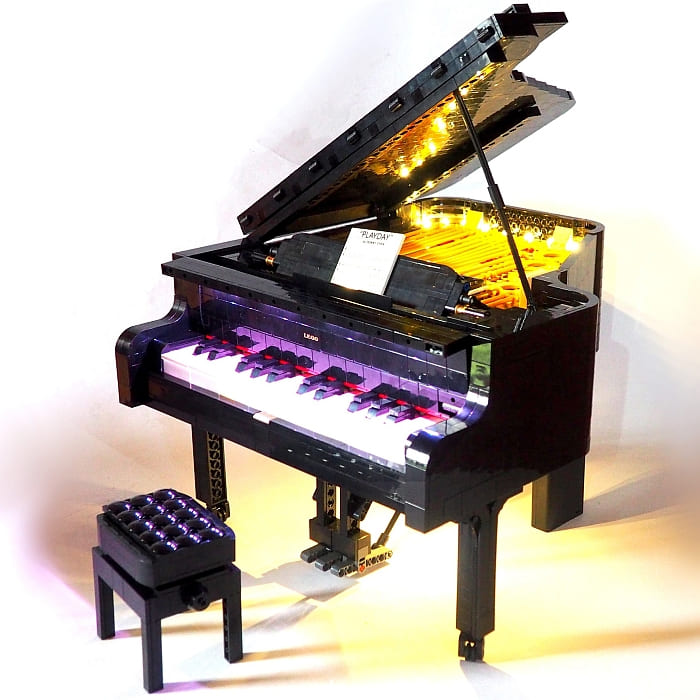
To conclude, the #21323 LEGO Ideas Grand Piano is a beautiful set. As a pianist and a LEGO fan, I definitely think you couldn’t beat this for a display piece. Not only is it gorgeous outside, it also has lots of well integrated functionality, especially the moving keys. I’m already quite familiar with how a piano works, but it’s still neat to see up close. And what does impress me is seeing these movements executed in bricks!
If you’re looking for a real piano playing experience, that’s not something this set can offer. I’d much rather play a piano than struggle with the built-in limitations of the app and LEGO Powered Up system.
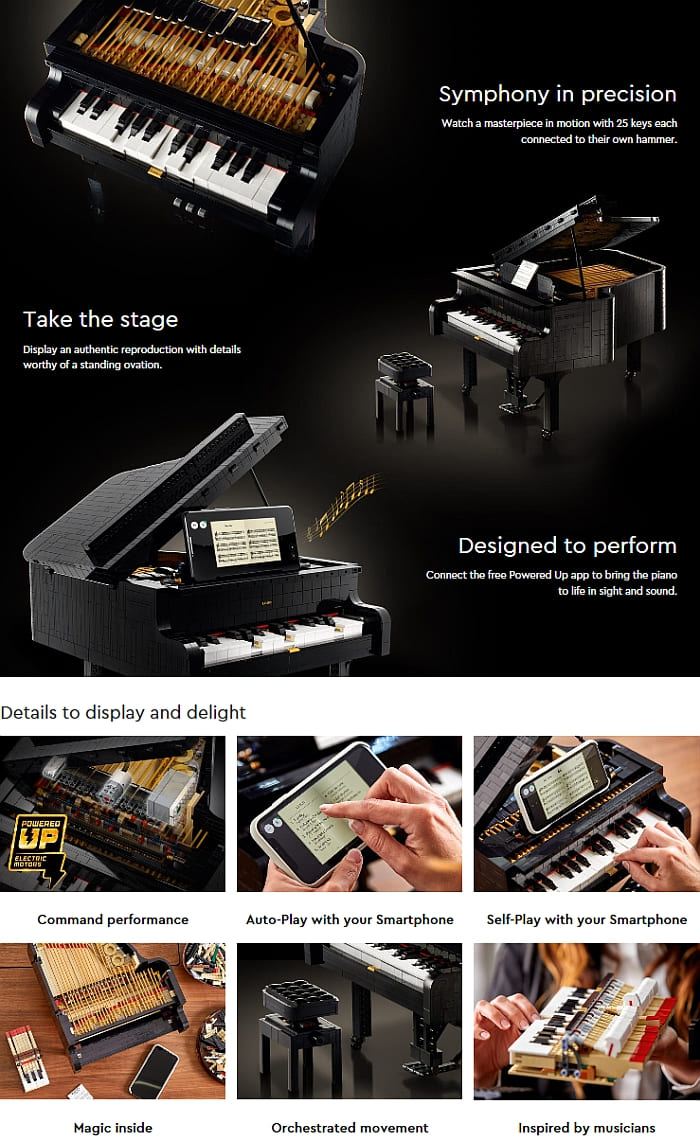
On the other hand, the self-playing function is a great addition to an already impressive display set. The movement and sound really draw attention. And it’s worth noting that the price per piece on this set is comparable to most LEGO sets (though low for an Ideas set)—so there isn’t much markup for the app or the LEGO Power Functions elements.
If I were just a pianist, I think I’d love this as a gift, but wouldn’t be willing to buy it myself. If I were just a LEGO fan, I know I’d love it as a gift, and I’d work it into my LEGO budget if I could. In a nutshell, the #21323 LEGO Ideas Grand Piano is a wonderful display piece with enough functionality to amaze anyone you show it to. If you’re interested in the set, you can find it at the LEGO Ideas section of the LEGO Shop.

So what do you think? Does the lack of true playability disappoint you? Were you impressed with the amount of functionality the piano actually has? Do you plan on getting the piano or have you already gotten it? Feel free to share your thoughts in the comment section below!
And you might also like to check out the following related posts:












That clarifies things. I knew the promoted app functionality implied something way too complex to be true. So it just detects when you hit any key, or it bounces the keys along in a simple, cartoonish imitation of piano playing, with the sound coming from the phone having no actual relation to either. Makes sense. Nobody’s asking for miracles here.
Yep, it does what you could reasonably expect it to do–fun but quite the let-down if you were expecting more!
Is that clicking sound coming from the app or from the mechanical movement, or the motors/gears?
The keys make a good deal of noise when you press them all the way down and then release, but I think the clicking you’re talking about is from the mechanics inside–there’s a long bar (a 32L technic axle, in fact!) that rises and falls on top of the back of the keys in order to… actually, I don’t remember (maybe I never knew 😉 ) exactly what it does, but it makes a slight rhythmic click.
I find that recordings generally tend to exaggerate mechanical noises–you can certainly hear the click in real life, but I didn’t think it was annoying.
The little red felt behind the keys, what is that made of? I didn’t notice it until I was looking at your pictures. So much attention to detail!
If I understand the instructions correctly, it’s a bunch of red cheese slopes…
https://www.lego.com/en-us/service/buildinginstructions/21323
Håkan has it exactly right, it’s a row of red cheese slopes. It looks brilliant!
I can’t afford a set this size and price, but it is beautiful. I think it will go down in history as one of the most impressive sets of all time.
Thanks for the video! It helps me understand how this works. I also liked what you did there with the scale. I was like…. what?! 😀
😀 I thought that would be a fun way to make it easy to see what’s different about the proportions of the piano. 😉 Glad you enjoyed it!
Wait a minute. Did you add that light up piano picture later? I read this article earlier, but I don’t remember that! It looks incredible!
Yes, the picture was added later when Geneva told me she got a light kit. You can follow the link in the article above to read her full review. 🙂